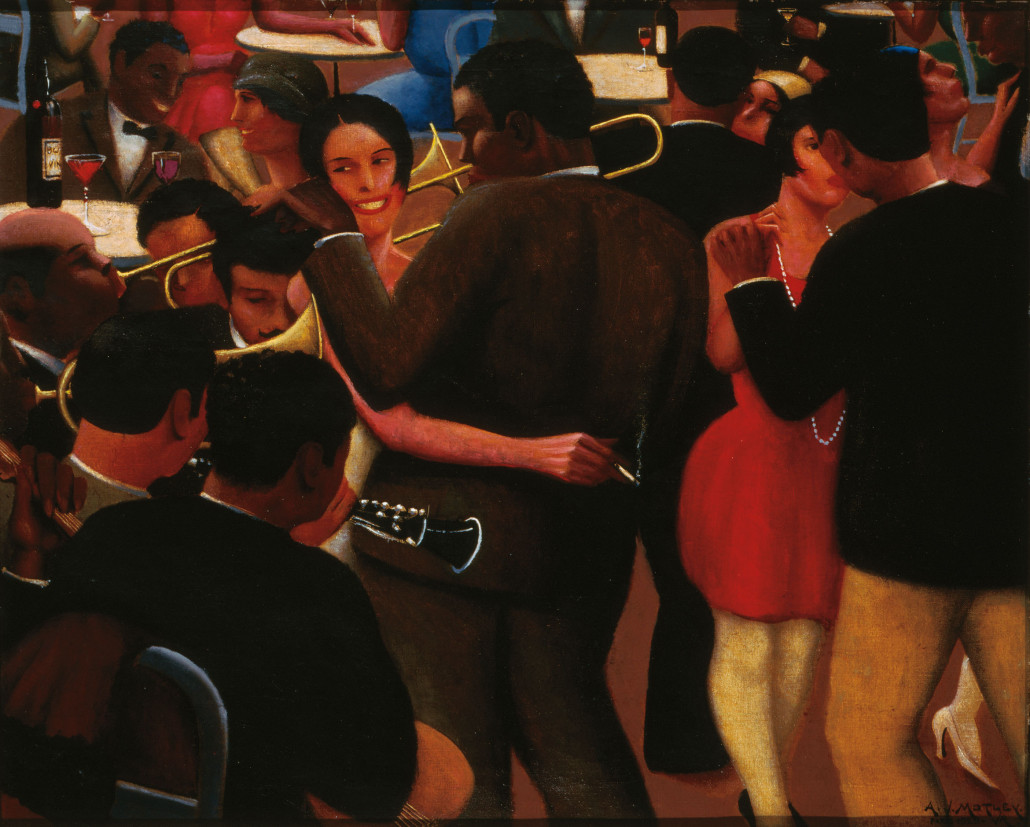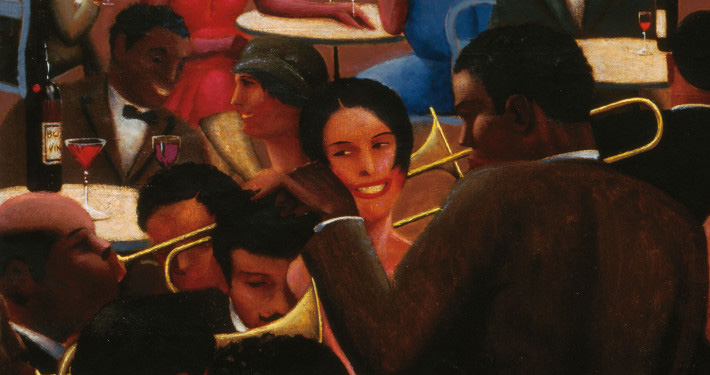
NEW YORK – This fall, the Whitney Museum of American Art will present “Archibald Motley: Jazz Age Modernist,” the first retrospective of this pioneering artist in New York City in more than two decades. One of the most important figures associated with the Harlem Renaissance, Motley was a master colorist with a daring sense of spatial invention, qualities he combined with keen observational skills honed on urban culture.
The exhibition offers an unprecedented opportunity to carefully examine Motley’s dynamic depictions of modern life, and will be on view from Oct. 2 through Jan. 17in the museum’s eighth-floor Hurst Family Galleries.
Comprised of 42 paintings spanning 1919 to 1963, the exhibition is a full-scale survey of Motley’s career and a rare opportunity to see such a large collection of his relatively small surviving body of work.
Although the artist worked in Chicago most of his life, he was also inspired by Jazz Age Paris, and, later in his career, visits to Mexico. Motley’s bold use of vibrant, expressionistic color and keen attunement to issues of race, society, and class make him one of the great visual chroniclers of his era.
“Archibald Motley’s achievement is on par with the greatest American artists of his generation. He inflected his paintings with an extraordinary visual rhythm and highly unusual sense of artificial light and color—his version of modernism is a unique and thrilling one. The presentation of this landmark exhibition at the Whitney and in the context of its collection argues for his long overdue place in the canon of great American painters,” said Carter E. Foster, Steven and Ann Ames Curator of Drawing at the Whitney.
Arranged thematically, with some chronological overlap, the exhibition has six sections, each looking at a particular facet of Motley’s oeuvre. It begins with a selection of the artist’s portraits, a traditional genre he treated with great sophistication, combining his strong sense of art history with an interest in changing social roles. The artist first achieved recognition for his dignified depictions of African Americans and people of mixed race descent, which challenged numerous contemporary stereotypes of race and gender.
Archibald John Motley Jr. (1891–1981) was born in New Orleans, but moved to Chicago, the city with which he is most closely associated, in 1894. His father was a Pullman porter, who lived and worked for the first half of the 20th century in a predominately white neighborhood on Chicago’s Southwest side, providing a middle-class lifestyle for his family.
Motley studied at the School of the Art Institute of Chicago from 1914 to 1918. Following his graduation, he participated in a string of group shows at the Art Institute of Chicago, receiving several awards for his work. In 1928, an exhibition of his paintings at New York City’s New Gallery garnered coverage in both The New York Times and The New Yorker.
Throughout the 1930s and ’40s, Motley’s work was included in several exhibitions in the United States, including “Contemporary Black Artists in America” at the Whitney (1933), as well as group shows at the National Gallery of Art in Washington, D.C. (1933), the Baltimore Museum of Art (1939), and the Library of Congress (1940).
In the 1950s, Motley made several lengthy visits to Mexico, where his nephew, the writer Willard F. Motley, lived. He largely stopped painting in 1972. In 1980, he was one of 10 African-American artists honored by Jimmy Carter at the White House. He died in Chicago in 1981.



